Entrepreneurship, Innovation, and Productivity Growth
The research group “Entrepreneurship, Innovation, and Productivity Growth” tackles a broad set of research topics that are of relevance for our understanding of patterns of innovation and productivity growth and explores implications for workers and firms. Areas of particular focus include the decline in business dynamism, the growth in automation, entrepreneurship and innovation, and supply chains. The work is empirical in focus, it is grounded in microeconomic data research, but seeks to understand relevant macroeconomic trends.
Workpackage 1: Business Dynamism
The last decade has seen the explosion of research on business dynamism largely as a result of the development of new comprehensive firm and establishment level micro datasets. In this workpackage we exploit existing CompNet data to understand patterns of business dynamism in Europe.
In particular this subgroup seeks to explain the role of technological change and market power. The team documents the decline in young firm activity and reallocation, and estimates models that assess the causes and impacts on productivity growth (with Matthias Mertens, Sergio Inferrara, and Filippo Biondi).
Workpackage 2: Entrepreneurship
Going back to the days of Schumpeter, economists understand the important role entrepreneurs play in modern capitalist economies. This workpackage sets up a collaboration with the ZEW to develop a new data infrastructure and explore entrepreneurship in Germany broadly. Areas of research include:
a. Entrepreneurship and Firm Performance: Understanding High Growth Firms.
b. Innovative Firms and the Diffusion of Technology
c. (Im)Migration, Entrepreneurship and Regional Development
Workpackage 3: Automation
The introduction of robots and automation technologies in the workplace are fundamentally altering the balance of tasks and skills that are in demand. At the same time automation technologies increase the productivity of the workers and firms that make use of them relative to those that do not and can potentially lead to winners and losers. In this workpackage we conduct research on robot automation and its impacts on workers and firms. We focus our research both in Germany and the U.S..
The research group makes use of various administrative and survey datasets from a variety of sources and countries.
IWH Data Project: CompNet Database
The Competitiveness Research Network (CompNet) is a research network founded in 2012 to foster the debate on competitiveness issues among partner institutions and researchers. It aims at providing a robust theoretical and empirical link between micro-level drivers of competitiveness and macroeconomic performance for research and policy analysis purposes.
CompNet is funded by various European institutions, including among others: European Bank of Reconstruction and Development (EBRD); European Central Bank (ECB); European Commission (EC); European Investment Bank (EIB); European Stability Mechanism (ESM); France Stratégie; German Council of Economic Experts, Halle Institute for Economic Research (IWH); German Federal Ministry of Economic Affairs and Climate Action (BMWK); Tinbergen Institute (TI). CompNet is advised by leading researchers in the field of firm performance and has created a European micro-aggregated industry- and country-level database on indicators of firm- and country-level competitiveness and performance.
The database is unique in terms of its coverage and contents, particularly as, although being aggregated, it contains rich information on firm heterogeneity (i.e., distributional characteristics, like standard deviations and various percentiles of the firm distributions) across a large set of countries and industries in Europe. Among others, key variables included in the database are indicators of firm productivity, market power, firms’ financial situation, trade, and firm dynamics.
Research Cluster
Productivity and InstitutionsYour contact

- Department Centre for Business and Productivity Dynamics, Cbpd
Refereed Publications
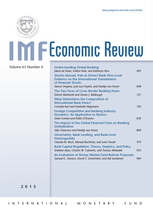
How Firms Respond to Business Cycles: The Role of Firm Age and Firm Size
in: IMF Economic Review, No. 3, 2013
Abstract
There remains considerable debate in the theoretical and empirical literature about the differences in the cyclical dynamics of firms by firm size. This paper contributes to the debate in two ways. First, the key distinction between firm size and firm age is introduced. The evidence presented in this paper shows that young businesses (that are typically small) exhibit very different cyclical dynamics than small/older businesses. The second contribution is to present evidence and explore explanations for the finding that young/small businesses were hit especially hard in the Great Recession. The collapse in housing prices accounts for a significant part of the large decline of young/small businesses in the Great Recession.
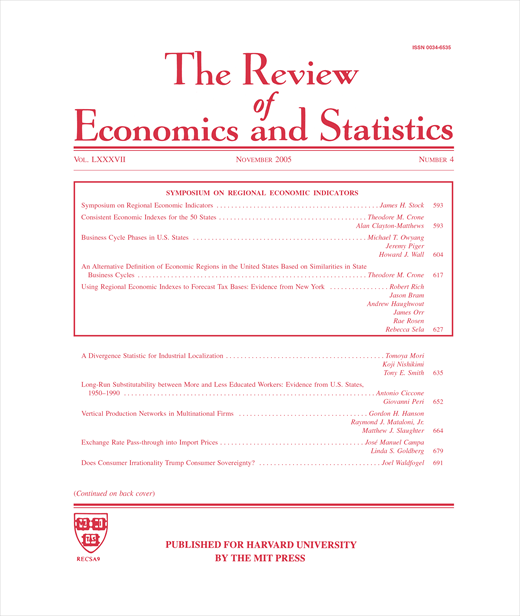
Who Creates Jobs? Small versus Large versus Young
in: Review of Economics and Statistics, No. 2, 2013
Abstract
The view that small businesses create the most jobs remains appealing to policymakers and small business advocates. Using data from the Census Bureau's Business Dynamics Statistics and Longitudinal Business Database, we explore the many issues at the core of this ongoing debate. We find that the relationship between firm size and employment growth is sensitive to these issues. However, our main finding is that once we control for firm age, there is no systematic relationship between firm size and growth. Our findings highlight the important role of business start-ups and young businesses in U.S. job creation.

Towards Unrestricted Public Use Business Microdata: The Synthetic Longitudinal Business Database
in: International Statistical Review, No. 3, 2011
Abstract
In most countries, national statistical agencies do not release establishment-level business microdata, because doing so represents too large a risk to establishments’ confidentiality. One approach with the potential for overcoming these risks is to release synthetic data; that is, the released establishment data are simulated from statistical models designed to mimic the distributions of the underlying real microdata. In this article, we describe an application of this strategy to create a public use file for the Longitudinal Business Database, an annual economic census of establishments in the United States comprising more than 20 million records dating back to 1976. The U.S. Bureau of the Census and the Internal Revenue Service recently approved the release of these synthetic microdata for public use, making the synthetic Longitudinal Business Database the first-ever business microdata set publicly released in the United States. We describe how we created the synthetic data, evaluated analytical validity, and assessed disclosure risk.
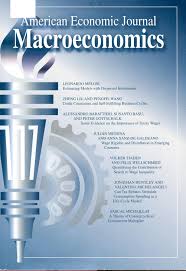
Business Volatility, Job Destruction, and Unemployment
in: American Economic Journal: Macroeconomics, No. 2, 2010
Abstract
Unemployment inflows fell from 4 percent of employment per month in the early 1980s to 2 percent by the mid 1990s. Using low frequency movements in industry-level data, we estimate that a 1 percentage point drop in the quarterly job destruction rate lowers the monthly unemployment inflow rate by 0.28 points. By our estimates, declines in job destruction intensity account for 28 (55) percent of the fall in unemployment inflows from 1982 (1990) to 2005. Slower job destruction accounts for similar fractions of long-term declines in the rate of unemployment.

Labor Market Analysis and Public Policy: The Case of Morocco
in: World Bank Economic Review, No. 3, 1999
Abstract
This article uses detailed industry and household data to understand why Morocco's labor market performed poorly in 1985–95. The data indicate that marked structural changes and weak demand in the product market were responsible. This article makes two contributions to the literature. The first is specific: it underscores that the demand for labor is a derived demand and that the performance of the product market is an important determinant of the performance of the labor market. The second is more general: it demonstrates that this kind of microeconomic analysis, using data sets that are often available in developing countries, can inform policy design.
Working Papers

Credit Card Entrepreneurs
in: IWH Discussion Papers, No. 5, 2025
Abstract
<p>Utilizing near real-time QuickBooks data from over 1.6 million small businesses and a targeted survey, this paper highlights the critical role credit card financing plays for small business activity. We examine a two year period beginning in January of 2021. A turbulent period during which, credit card usage by small U.S. businesses nearly doubled, interest payments rose by 60%, and delinquencies reached 2.8%. We find, first, monthly credit card payments were up to three times higher than loan payments during this time. Second, we use targeted surveys of these small businesses to establish credit cards as a key financing source in response to firm-level shocks, such as uncertain cash flows and overdue invoices. Third, we establish the importance of credit cards as an important financial transmission mechanism. Following the Federal Reserve’s rate hikes in early 2022, banks cut credit card supply, leading to a 15.75% drop in balances and a 10% decline in revenue growth, as well as a 1.5% decrease in employment growth among U.S. small businesses. These higher rates also rendered interest payments unsustainable for many, contributing to half of the observed increase in delinquencies. Lastly, a simple heterogeneous firm model with a cash-in-hand constraint illustrates the significant macroeconomic impact of credit card financing on small business activity.</p>
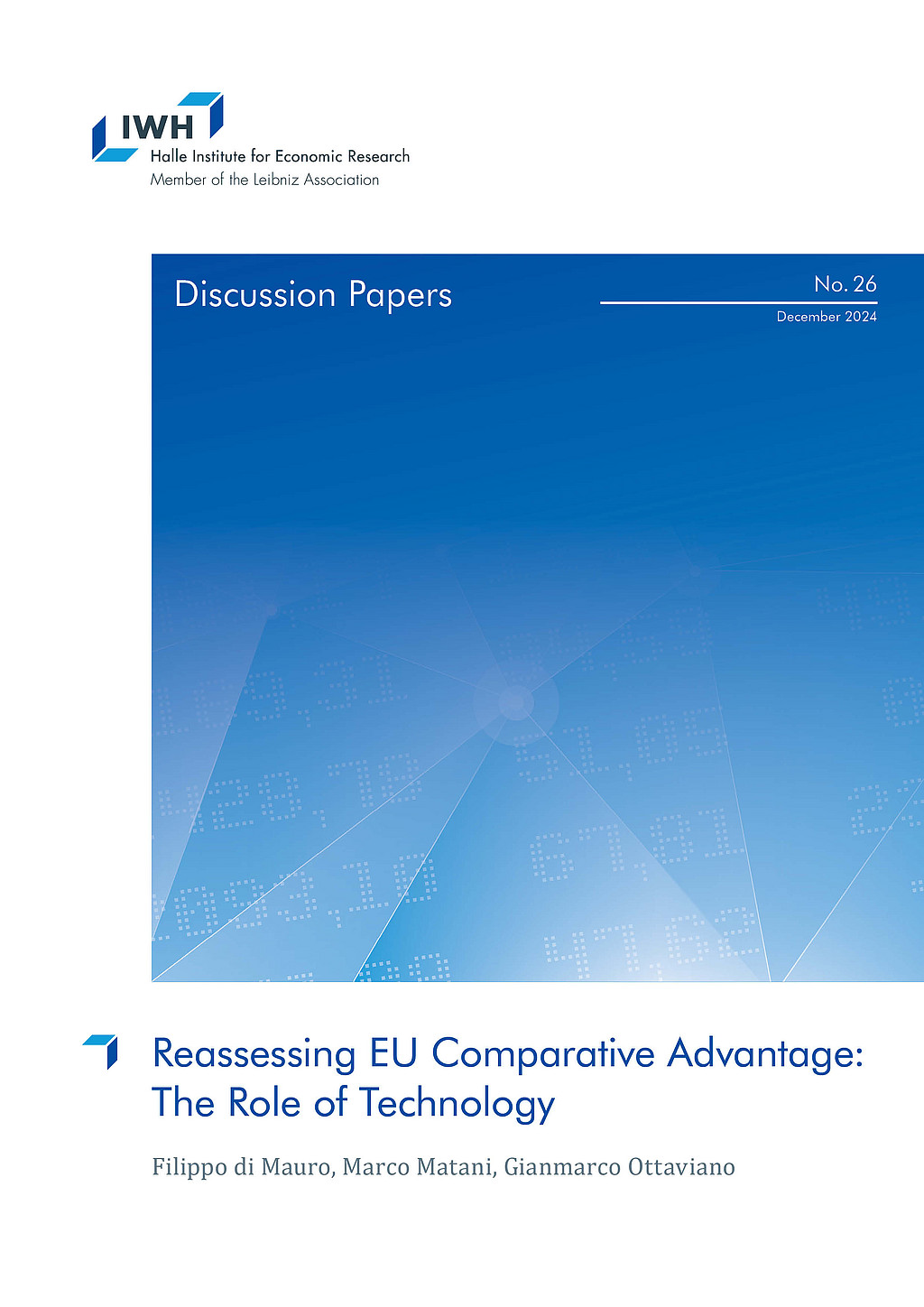
Reassessing EU Comparative Advantage: The Role of Technology
in: IWH Discussion Papers, No. 26, 2024
Abstract
<p>Based on the sufficient statistics approach developed by Huang and Ottaviano (2024), we show how the state of technology of European industries relative to the rest of the world can be empirically assessed in a way that is simple in terms of computation, parsimonious in terms of data requirements, but still comprehensive in terms of information. The lack of systematic cross-industry correlation between export specialization and technological advantage suggests that standard measures of revealed comparative advantage only imperfectly capture a country’s technological prowess due to the concurrent influences of factor prices, market size, markups, firm selection and market share reallocation.</p>
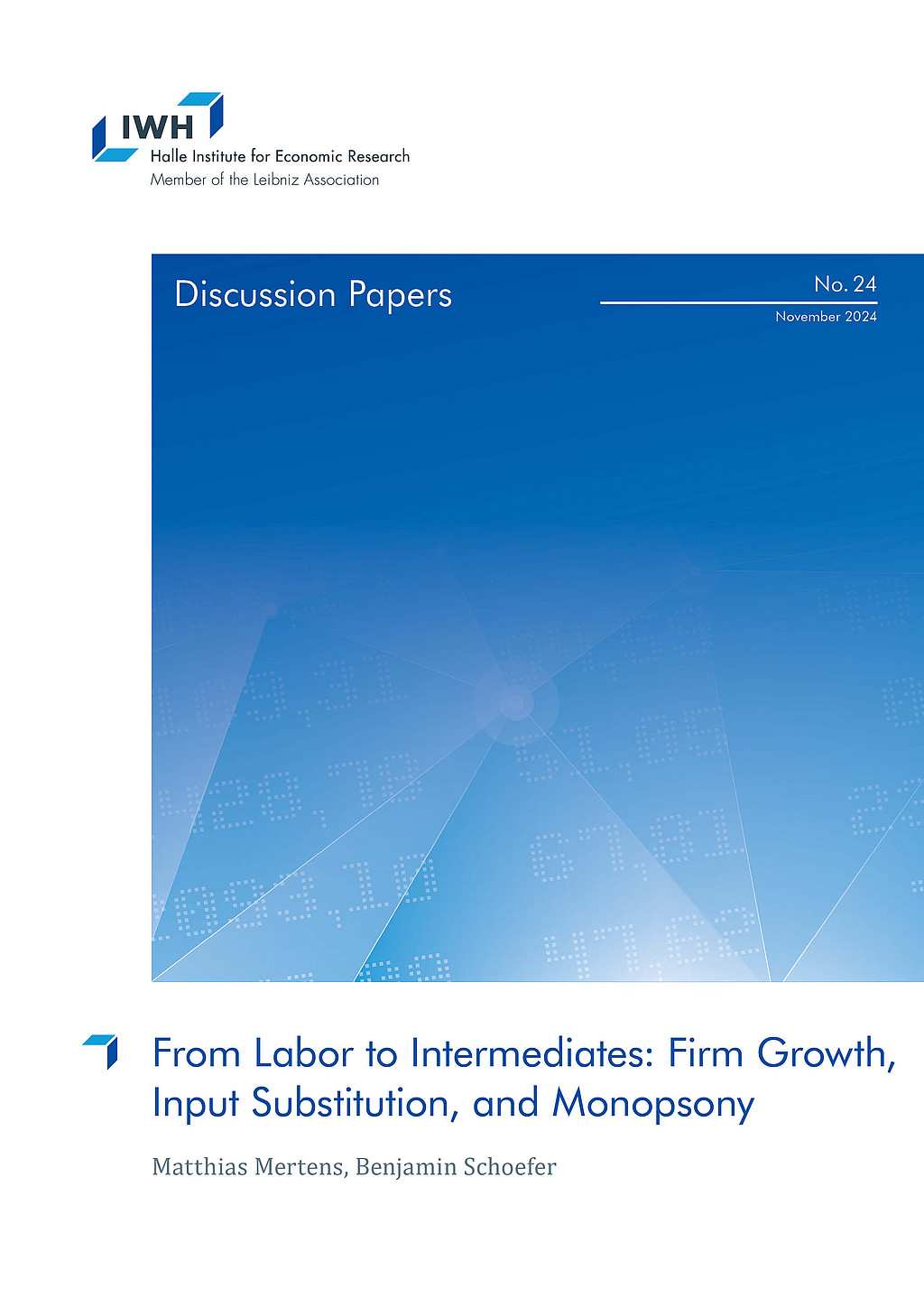
From Labor to Intermediates: Firm Growth, Input Substitution, and Monopsony
in: IWH Discussion Papers, No. 24, 2024
Abstract
<p>We document and dissect a new stylized fact about firm growth: the shift from labor to intermediate inputs. This shift occurs in input quantities, cost and output shares, and output elasticities. We establish this fact using German firm-level data and replicate it in administrative firm data from 11 additional countries. We also document these patterns in micro-aggregated industry data for 20 European countries (and, with respect to industry cost shares, for the US). We rationalize this novel regularity within a parsimonious model featuring (i) an elasticity of substitution between intermediates and labor that exceeds unity, and (ii) an increasing shadow price of labor relative to intermediates, due to monopsony power over labor or labor adjustment costs. The shift from labor to intermediates accounts for one half to one third of the decline in the labor share in growing firms (the remainder is due to wage markdowns and markups) and rationalizes most of the labor share decline in growing industries.</p>

Declining Job Reallocation in Europe: The Role of Shocks, Market Power, and Technology
in: IWH Discussion Papers, No. 19, 2023
Abstract
<p>We study changes in job reallocation in Europe after 2000 using novel microaggregated data that we collected for 19 European countries. In all countries, we document broad-based declines in job reallocation rates that concern most economic sectors and size classes. These declines are mainly driven by dynamics within sectors, size, and age classes rather than by compositional changes. Simultaneously, employment shares of young firms decline. Consistent with US evidence, firms’ employment has become less responsive to productivity shocks. However, the dispersion of firms’ productivity shocks has decreased too. To enhance our understanding of these patterns, we derive and apply a firm-level framework that relates changes in firms’ market power, labor market imperfections, and production technology to firms’ responsiveness and job reallocation. Using German firm-level data, we find that changes in markups and labor output elasticities, rather than adjustment costs, are key in rationalizing declining responsiveness.</p>
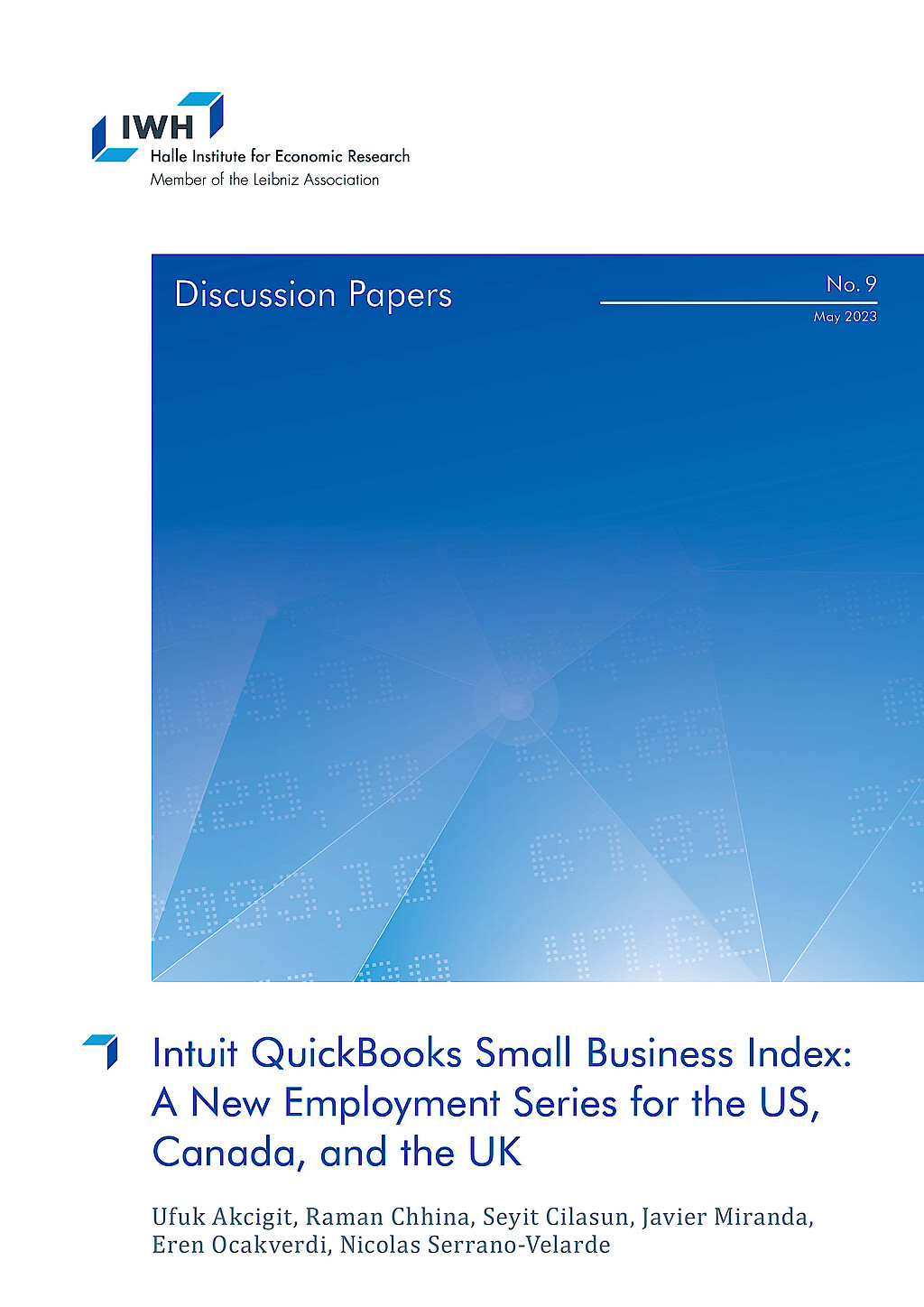
Intuit QuickBooks Small Business Index: A New Employment Series for the US, Canada, and the UK
in: IWH Discussion Papers, No. 9, 2023
Abstract
Small and young businesses are essential for job creation, innovation, and economic growth. Even most of the superstar firms start their business life small and then grow over time. Small firms have less internal resources, which makes them more fragile and sensitive to macroeconomic conditions. This suggests the need for frequent and real-time monitoring of the small business sector’s health. Previously this was difficult due to a lack of appropriate data. This paper fills this important gap by developing a new Intuit QuickBooks Small Business Index that focuses on the smallest of small businesses with at most 9 workers in the US and the UK and at most 19 workers in Canada. The Index aggregates a sample of anonymous Quick- Books Online Payroll subscriber data (QBO Payroll sample) from 333,000 businesses in the US, 66,000 in Canada, and 25,000 in the UK. After comparing the QBO Payroll sample data to the official statistics, we remove the seasonal components and use a Flexible Least Squares method to calibrate the QBO Payroll sample data against official statistics. Finally, we use the estimated model and the QBO Payroll sample data to generate a near real-time index of economic activity. We show that the estimated model performs well both in-sample and out-of-sample. Additionally, we use this analysis for different regions and industries. Keywords:













